Learning the alphabet is a fundamental milestone in a child’s educational journey. These 26 letters serve as the building blocks for reading, writing, and communication skills that will last a lifetime. However, traditional methods of alphabet instruction can sometimes feel repetitive and uninspiring for young learners. The good news is that there are countless fun ways to learn the alphabet that engage multiple senses, cater to different learning styles, and turn this essential skill into an adventure rather than a chore. When children associate joy and play with learning, they’re more likely to retain information and develop a lifelong love of learning. Let’s explore creative and enjoyable approaches that make alphabet acquisition a delightful experience for both children and their supportive adults.
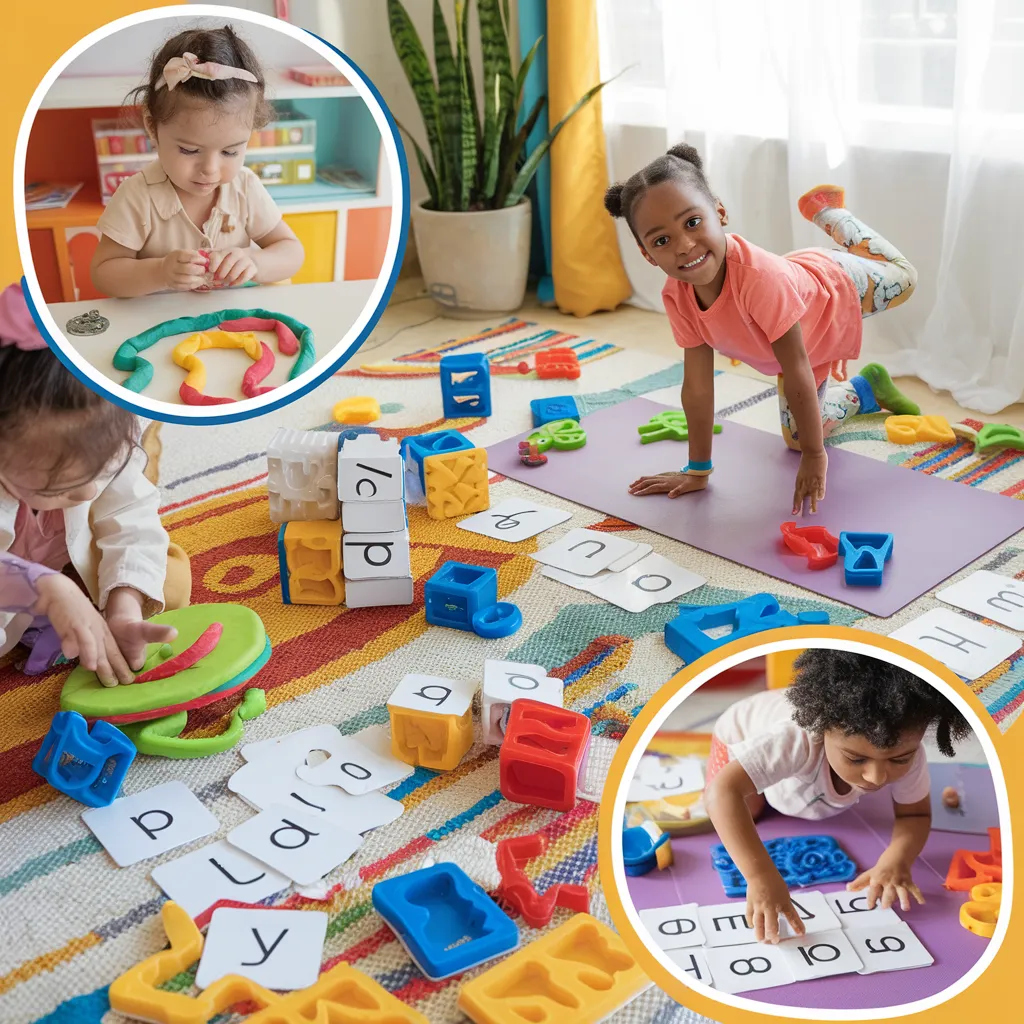
Multisensory Fun Ways to Learn the Alphabet
Children learn best when they can see, hear, touch, and experience new concepts. By engaging multiple senses in alphabet learning, you create stronger neural connections and more memorable learning experiences.
Tactile Alphabet Activities That Spark Joy
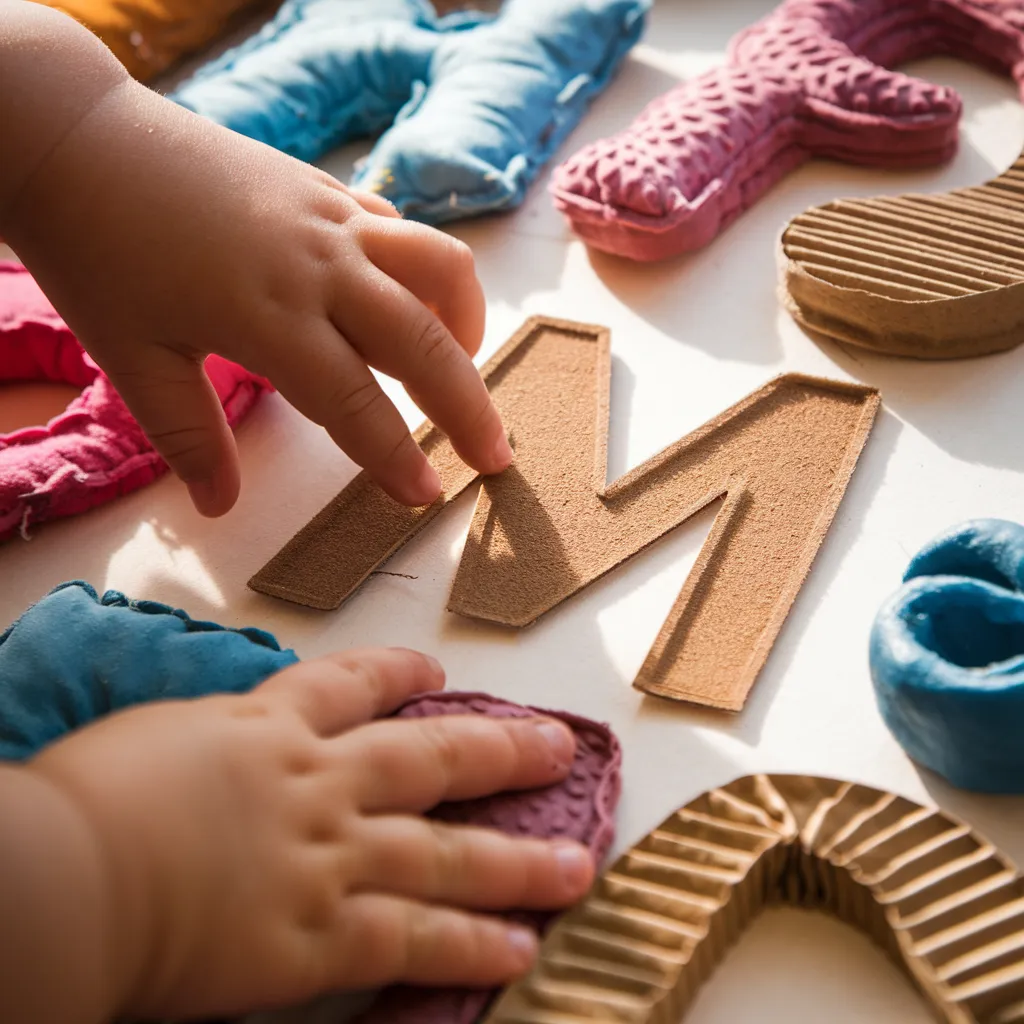
Hands-on exploration provides powerful learning opportunities for mastering letter recognition and formation. Create a sensory alphabet bin filled with rice, sand, or water beads where children can hunt for buried letter tiles. Once found, they can name each letter and its sound. Alternatively, form letters using playdough, pipe cleaners, or craft sticks, allowing children to physically manipulate the shapes while internalizing their distinctive features. Textured letter cards made with sandpaper, fabric scraps, or puffy paint invite little fingers to trace each letter’s path, reinforcing proper formation through touch. These tactile fun ways to learn the alphabet transform abstract symbols into concrete, physical experiences that resonate with kinesthetic learners.
Movement-Based Alphabet Games for Active Learners

Children naturally crave movement, and channeling this energy into alphabet learning creates joyful, memorable experiences. Try « Alphabet Yoga, » where children form letter shapes with their bodies, stretching and balancing while calling out letter names and sounds. For outdoor excitement, use sidewalk chalk to create an oversized alphabet hopscotch grid where children jump to letters as you call them out. Inside, place letter cards around the room for an alphabet scavenger hunt, having children hop, skip, or crawl to each letter they find. These movement-based activities not only reinforce letter knowledge but also support physical development and make learning feel like play rather than work.
Playful Alphabet Learning Through Everyday Activities
Some of the most effective alphabet learning happens outside formal educational settings, woven naturally into daily life and play.
Kitchen Alphabet Adventures
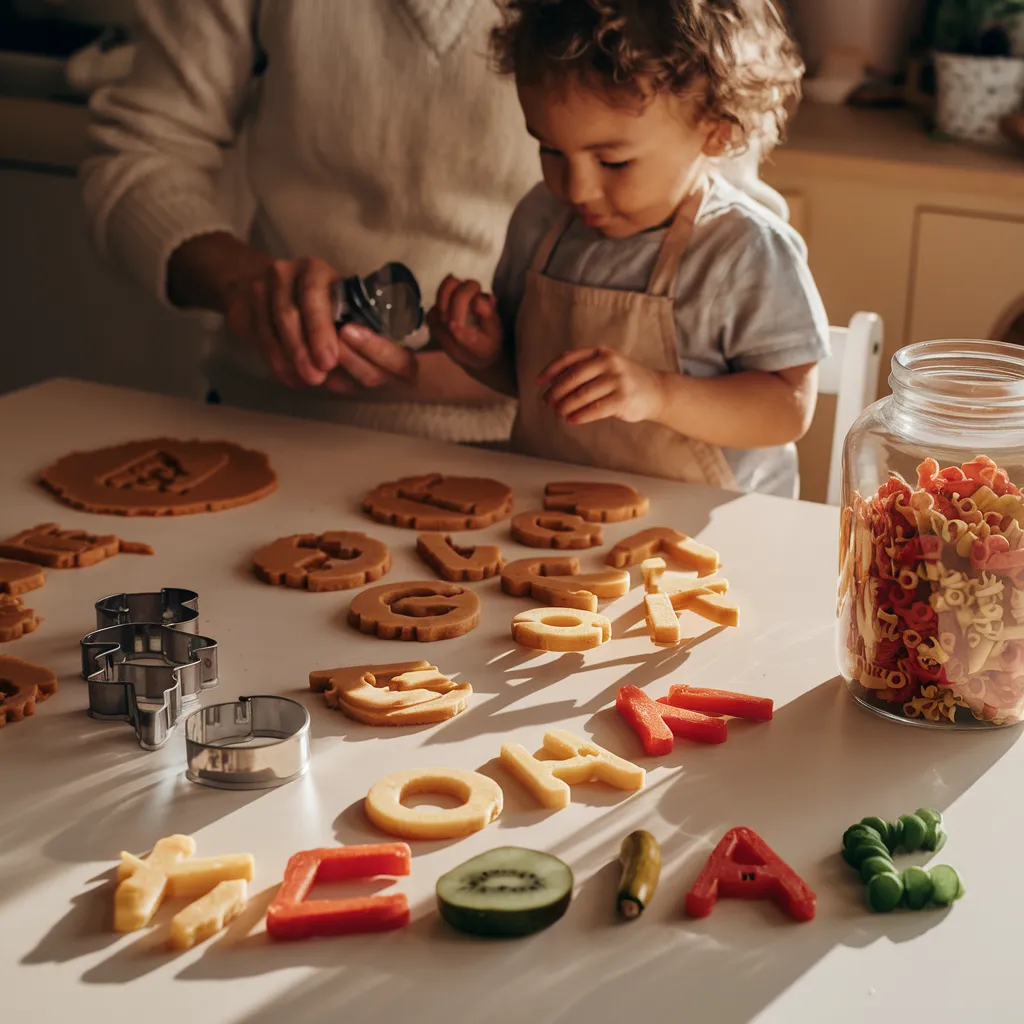
The kitchen offers countless opportunities for organic alphabet learning. Bake alphabet-shaped cookies or pretzels, discussing each letter’s name and sound as you form and eat them. During grocery shopping or unpacking, play the alphabet food game – finding items that start with each letter from apples to zucchini. Create alphabet soup using pasta letters, fishing out each letter to identify before eating. These culinary fun ways to learn the alphabet connect literacy to positive experiences with food and family time, creating associations that strengthen both learning and relationships.
Alphabet Learning Through Storytelling and Dramatic Play
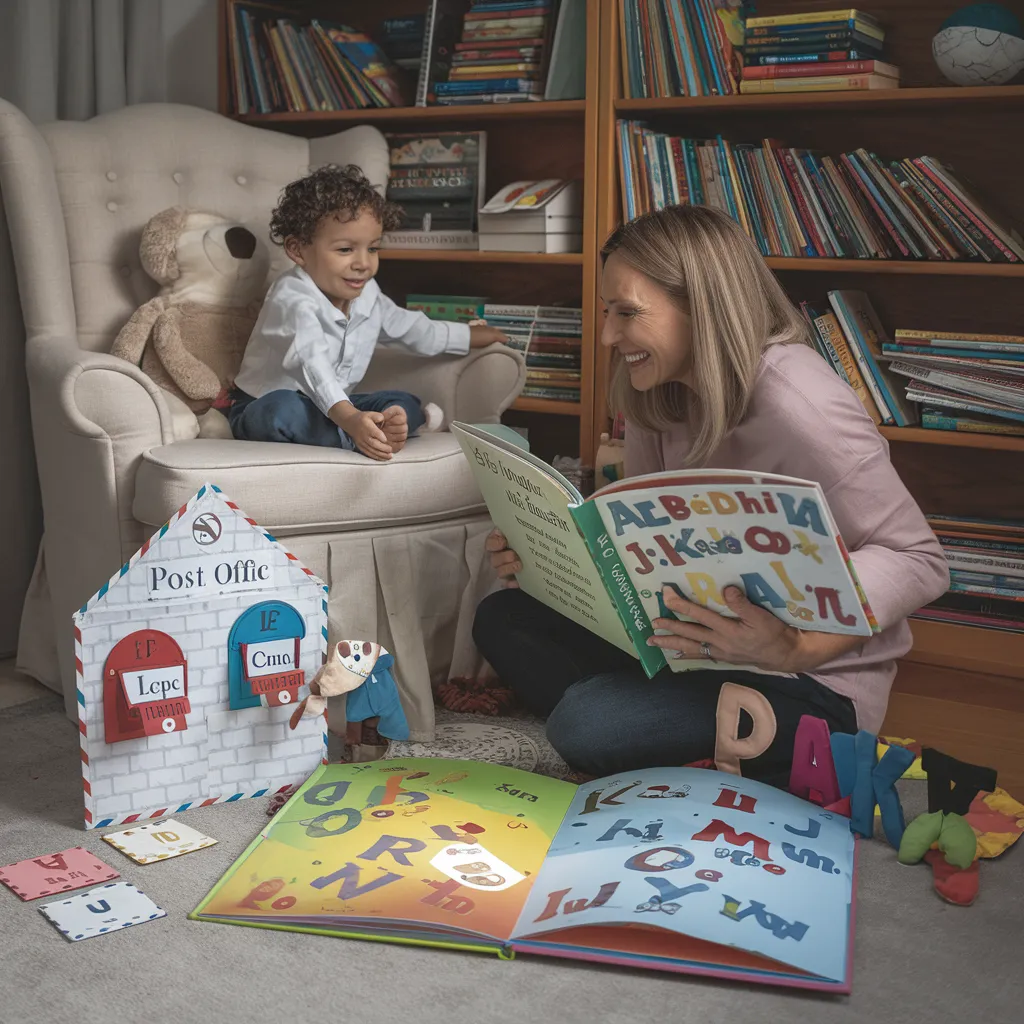
Stories and imaginative play create emotional connections to learning that enhance retention and enjoyment. Create simple alphabet stories where a character encounters objects beginning with each letter (« Andy Ant ate an apple, bounced on a ball… »). Establish an alphabet post office where children deliver letter-shaped mail to corresponding mailboxes. Set up a pretend restaurant with alphabet-themed menu items that children must « read » and « order. » These playful scenarios embed alphabet learning within meaningful contexts, helping children understand that letters aren’t just abstract symbols but tools for communication and expression in everyday life.
Technology-Enhanced Fun Ways to Learn the Alphabet
When used thoughtfully, technology offers engaging, interactive avenues for alphabet discovery.
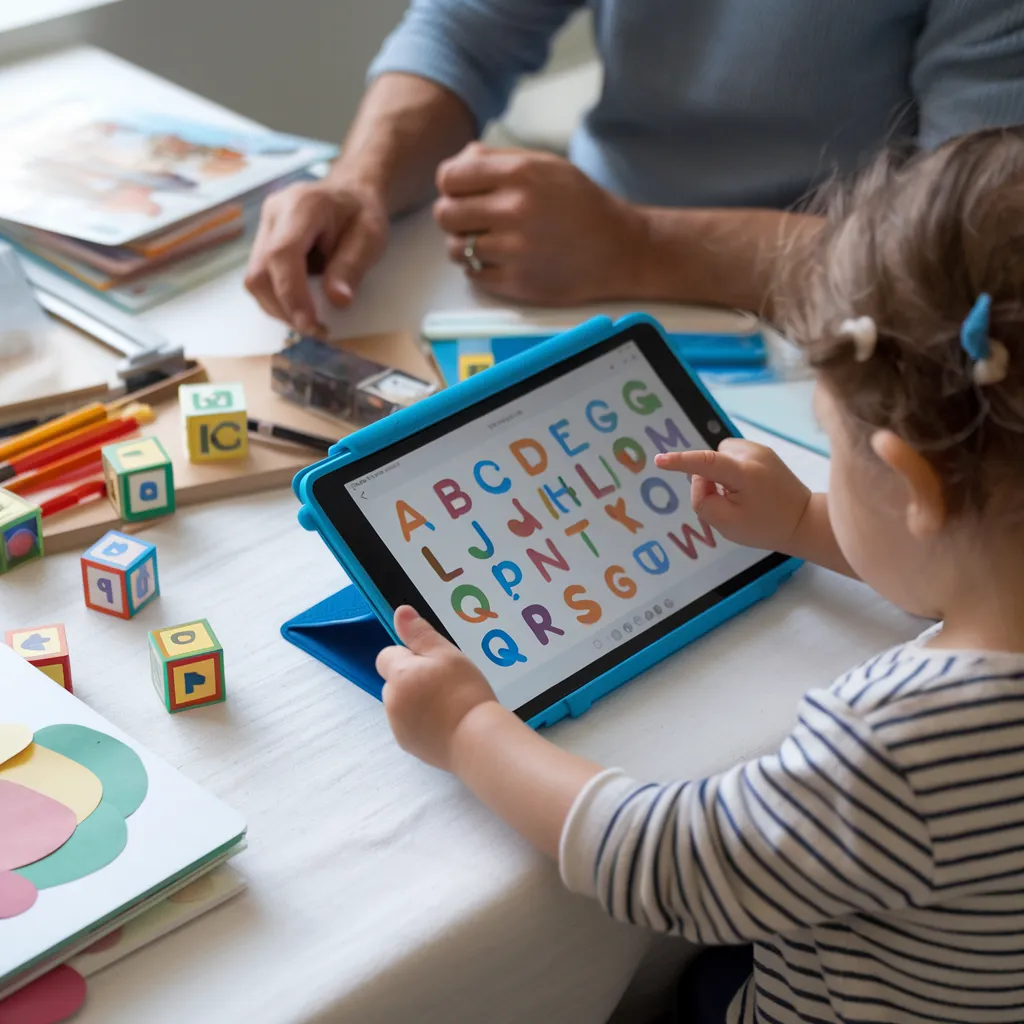
Quality Alphabet Apps and Interactive Learning Tools
In today’s digital world, carefully selected technology can enhance alphabet learning through animation, sound, and interactivity. Look for apps that encourage active participation rather than passive watching – those requiring children to trace letters, match sounds to symbols, or create words from letters they’ve learned. Digital alphabet puzzles, interactive alphabet books, and letter recognition games provide immediate feedback and adaptive challenges that keep children engaged. The best digital tools incorporate characters or themes that children love, making alphabet practice feel like an extension of play rather than a separate educational activity.
Creating Digital Alphabet Content Together
Transform children from consumers to creators by involving them in making digital alphabet content. Use simple recording features on smartphones to create personalized alphabet songs where children sing about objects meaningful to them. Take photos of objects around your home or neighborhood to create a digital alphabet book unique to your child’s world. Use child-friendly video tools to record alphabet puppet shows or skits where children act out words beginning with focus letters. These creative projects not only reinforce alphabet knowledge but also develop digital literacy skills and give children ownership over their learning journey.
Social and Collaborative Alphabet Learning Games
Learning becomes more meaningful and enjoyable when shared with others, whether peers, siblings, or caring adults.
Family Alphabet Game Night Ideas
Designate special family time for alphabet-focused games that everyone can enjoy. Classic games like Scrabble Junior or alphabet bingo build letter recognition while fostering family bonding. Create an alphabet scavenger hunt where family teams race to find items starting with assigned letters. Play alphabet storytelling games where each person adds a sentence with words beginning with consecutive letters. These shared experiences demonstrate that literacy is valued in your family while creating joyful memories associated with letters and words. When children see the adults they love engaging enthusiastically with the alphabet, they naturally develop positive attitudes toward literacy.
Conclusion: Embracing the Journey of Alphabet Discovery
The path to alphabet mastery is as important as the destination itself. By incorporating these fun ways to learn the alphabet into daily life, you transform what could be rote memorization into joyful discovery. Remember that consistency matters more than perfection – even five minutes of playful alphabet engagement each day builds stronger skills than occasional lengthy sessions. Celebrate progress, follow your child’s interests, and remain flexible in your approach. Every child learns differently, so observe what sparks enthusiasm and build upon those activities.
As you implement these strategies, you’re not just teaching letters – you’re nurturing a positive relationship with learning itself. The confidence and joy children develop through these playful approaches extend far beyond alphabet mastery, laying foundations for reading success and academic engagement for years to come. Start with just one or two ideas that resonate with your child’s interests, and watch their alphabet knowledge and love of learning grow together.
5 Powerful Ways Alphabet Tracing Printables Revolutionize Early Literacy Success
Frequently Asked Questions About Fun Ways to Learn the Alphabet
At what age should children begin alphabet learning activities?
Most children are ready for playful introduction to letters between ages 2-3, though formal letter recognition typically develops between 3-5 years. Rather than focusing on age milestones, look for interest signs like noticing letters in the environment, asking about written words, or pretending to read. Begin with casual exposure through alphabet books and songs, gradually introducing more structured activities as attention span and interest grow. Remember that children’s developmental timelines vary significantly, and forcing alphabet learning before readiness can create negative associations.
Should I teach letter names or sounds first?
Research suggests that teaching letter sounds has more direct application to early reading, as children can immediately begin blending sounds to decode simple words. However, many successful approaches teach both simultaneously, helping children understand that letters have both names and sounds. Consider using the phrase « This is the letter B, it makes the /b/ sound as in ball » to connect these concepts. Whichever approach you choose, consistency helps prevent confusion while building a complete understanding of how our alphabet system works.
How can I support alphabet learning for a child who seems uninterested?
Rather than pressing alphabet activities on a reluctant child, look for ways to integrate letters into their existing interests. If they love dinosaurs, explore dinosaur names and their beginning letters. For vehicle enthusiasts, point out letters on license plates or road signs during drives. Sometimes stepping back from formal instruction and simply modeling enthusiasm for letters through your own reading and writing creates space for natural curiosity to develop. Remember that pressure often creates resistance, while play-based, interest-led approaches typically yield better long-term results.
How do I know if my child is progressing appropriately with alphabet learning?
Healthy alphabet development typically progresses from recognizing a few meaningful letters (often those in their name), to identifying most uppercase letters, then lowercase letters, and finally connecting letters with their consistent sounds. Rather than focusing on arbitrary benchmarks, look for gradual growth and maintained enthusiasm for learning. If a child consistently struggles despite varied, playful approaches, or shows signs of frustration and avoidance, consult with early childhood educators who can assess whether additional support might be beneficial.
What are the most important letters to teach first?
Many educators recommend beginning with meaningful letters like those in a child’s name, as personal connection increases motivation and retention. Beyond this personalized approach, some suggest starting with letters that occur frequently in simple words (like M, S, A, T) or letters with consistent sounds that are easier to pronounce in isolation (like B, P, D versus X or Q). Most importantly, follow your child’s lead – if they show particular interest in certain letters, build upon that natural curiosity rather than adhering strictly to a predetermined sequence.

Ping : 12 Powerful Alphabet Flashcards Printable Sets to Revolutionize Early Learning - smartkidsprintable